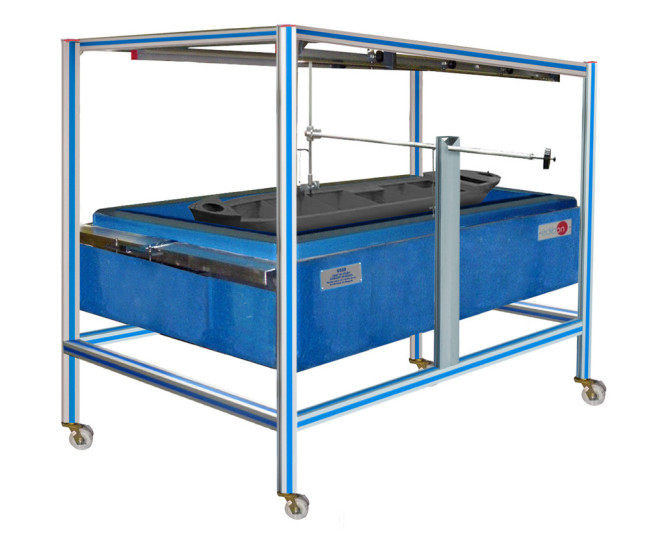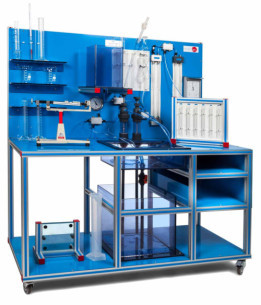The study of ship stability and the analysis of vibrations that can occur in a vessel are crucial aspects for the construction and development of naval engineering.
The Ship Stability Study Unit, "USSB", designed by EDIBON, enables a comprehensive analysis of a ship's stability, vibrations, and hydrostatics. This equipment also allows for the determination of the buoyant force, the metacenter, and the center of mass.
In this way, it provides a detailed analysis of the ship's dynamic behavior and stability, which are critical for understanding how vibrations and design can influence the structural and operational stability of the vessel under various navigation conditions.
Four different models are available depending on the study to be conducted (not included):
- USSB/A. Rectangular Barge Model. A scale representation of a barge, a flat-bottomed vessel commonly used for transporting goods in rivers and canals.
- USSB/B. Trawler Model. A scale representation of a trawler, typically designed for fishing and usually equipped with nets that drag along the sea floor to catch fish and seafood.
- USSB/C. Crane Ship Model. A scale representation of a vessel equipped with a crane, primarily used for loading and unloading operations, lifting, and transporting heavy loads in ports, offshore platforms, and other maritime areas.
- USSB/V. Vibration Study Model. A scale representation designed to study the dynamic behavior and vibrations of naval structures, allowing for the analysis of how different frequencies and vibration modes influence the stability and performance of the vessel.
Additionally, the Water Tank and Angle Stability Accessories for USSB, "USSB/TAN," allow for the study of stability by immersing different ship models, which are secured with a mechanism equipped with a clinometer. This facilitates the execution of rolling and righting experiments. Additional ballast and weights enable complementary tests, providing a comprehensive understanding of the critical aspects of stability and the dynamic behavior of naval structures.
 Préférences sur les cookies
Préférences sur les cookies







